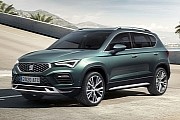history
Sociedad Espagnola de Automoviles de Turismo or Seat for short is the biggest car manufacturer to come out of Spain. The company started out in 1950 with the help of the Instituto Nacional de Industria and Fiat. That's why at first, Seat were simply rebadged and slightly modified Fiats. They even kept the names. For instance, the Seat Panda was based on the Fiat Panda and so was the Seat 600, on the Fiat 600.
The first model Seat however, was the the Seat 1400, which began production in 1953. Soon, they turned to making and exporting Seats to Colombia in 1965. By 1968, Seat had reached its first million cars in production and by 1974 its second million.
But however big the Spanish manufacturer became, it needed the expertise and funds of a much bigger and older car producer. Especially since Fiat pulled out of the deal in 1981. This time Seat would turn to Germany for a partner and it would find it in Volkswagen, with who it signed a deal in 1982.
That same year, the first “Fiat free” car appeared, named the Seat Ronda. Basically, it was a restyled Fiat Ritmo, a fact which didn't bode well with the Italians who were quick to take the matter to court. In order to settle the dispute, Seat president at the time, Juan Miguel Antonanzas showed in a press conference a Fiat Ritmo and a Seat Ronda side by side, with the Seat having painted in bright yellow all the parts that were differences from the “donor car”.
In 1984 the first Ibiza model rolled out of the factory at Zona Franca, based on the Volkswagen Polo. The partnership with Volkswagen was soon going to become a lot tighter as in 1986 the German automaker was going to purchase 51% of Seat shares in June and then go up to 75% byt the end of that year.
Just 4 years later Volkswagen is going to go all the way and buy the whole of Seat, owning 99,99% of its shares. The first Seat model after the acquisition was the Toledo, unveiled in 1991. The new Ibiza and the Cordoba are developed in 1993, as Seat celebrates the opening of a new plant at Martorell.
1995 sees the 10th million Seat being produced. The event is celebrated by having the car roll out of the assembly line driven by the Prince of Asturias. A new face for Seat is being concocted, as new models are being introduced: the Alhambra in 1996, the new Toledo in 1998 and the rally-ready Ibiza WRC and Cordoba WRC with which Seat attains several titles.
As the new century rolls in, the company follows a new line in branding and marketing, more aggressive and more innovative. The Leon Cupra and the new Cordoba introduced in 2002. That same year a reorganization within the Volkswagen group sees Seat join the Audi Brand Group.
expand






























